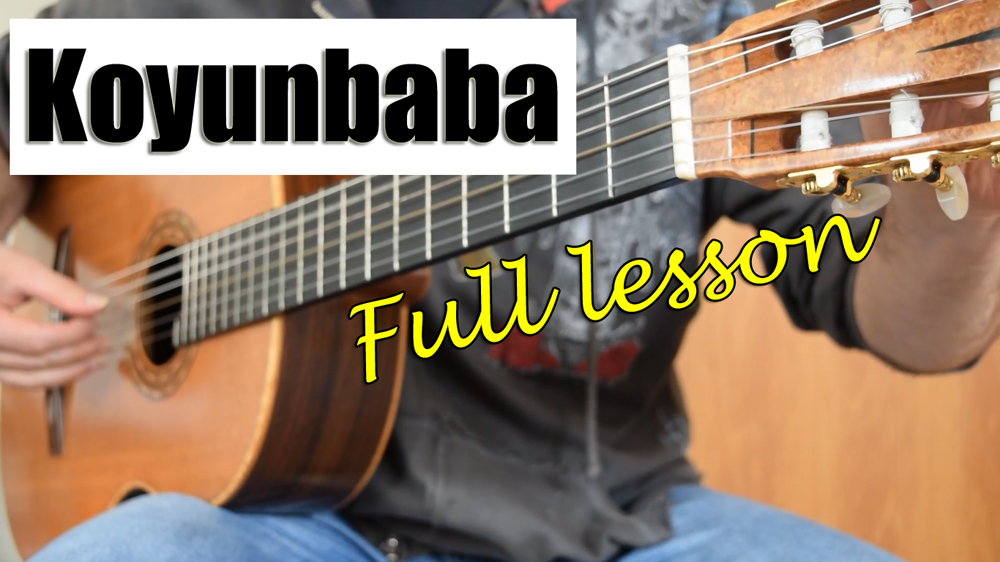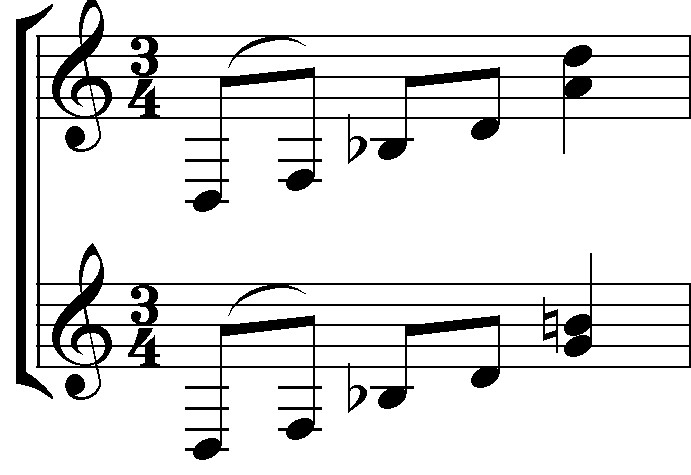
Learn Koyunbaba by Domeniconi
This lesson on Koyunbaba by Carlo Domeniconi is going to show you how to learn this fantastic classical guitar piece. We will break it down bar by bar, highlighting the fingering, and hacks you need to perform this great piece of music.
New 2023 – Domeniconi Discusses Koyunbaba
This brand-new video will help you immensely with nailing the musical phrasing, the ideas and the story behind this amazing piece. All from the composer himself – Carlo Domeniconi deep dives into Koyunbaba.
Learn Koyunbaba by Domeniconi – tuning
Learning Koyunbaba will first require you to de-tune your guitar strings, quite a bit. So have a little patience with this process as it will take time for your guitar to settle. The video below will step you through two ways of getting that guitar into the C# tuning this piece requires.
Koyunbaba by Domeniconi has one additional challenge to it. Reading the score! The score has scordatura in it, which poses a slight bump in the road when reading straight off. Take a look at the small snippet below and it could be a tad confusing. Which score do I choose to read?

The bottom line is the scordatura or TAB. Yes! That is classical guitar TAB. The top line is the actual piece at pitch. In the case of Domeniconi’s Koyunbaba you need to read the bottom line but as if you are playing a guitar in Drop D tuning (lowered E string to D). Again the video above will help you step through this process.
Learn Koyunbaba Movement 1
Below is the video for the first movement of Koyunbaba. It is a wonderful evocative opening that requires, slurs, RH fine control and good barre technique. Make sure you take it slow, as the barre work in this section can be challenging. Top Tip: pull back on the LH, do not squeeze with the thumb.
Learn Koyunbaba Movement II
The video below will help step you through, bar by bar, movement 2 of Koyunbaba. We are going to cover the sextuplet right hand rhythm, the left hand fingering, and how to to nail those ornaments and harmonics that finish this section. Top tip here: learn the LH fingering, and the RH fingering seperately. Then place back together. This makes this section easier to pick up, there are only 4 patterns to the RH, and the LH is mainly thirds. This section is magical and very musical, and also very fun to play. So it is worth the effort.
Learn Koyunbaba Movement III
The series of videos below will help step you through, bar by bar, movement 3 of Koyunbaba. First we are going to cover the opening melody and its right hand rhythm, then left hand fingering.
Next will be the second part with it’s repetitive RH pattern. Top tip here: learn the LH fingering, and the RH fingering separately. Then place back together.
This makes this third section easier to pick up, there are only 2 patterns to the RH, and the LH is mainly thirds. This section is magical and very musical, and also very fun to play. So it is worth the effort.
Above is the final part to movement III we dive into the last few pages of music on Koyunbaba by Domeniconi. Here we get into playing those challenging arrestre chords, and crunchy harmonies that end this piece.
Koyunbaba by Domeniconi – inspiration
Koyunbaba means shepherd in Turkish, however Koyunbaba is also a neighborhood of Bodrum in Southwestern Turkey. Domeniconi was head of the guitar program of the İstanbul University Conservatory, and its founder. And so he is familiar with the area, its culture and more importantly its music. Koyunbaba is infused with Turkish musical elements: its tuning, the poly-rhythms, the ornaments, and the modes. All are Turkish derived. But you don’t need to take my word for it. Here is an interview by Carlo Domeniconi in which he discusses Koyunbaba.
Want More?
If you want more, and there is more, consider joining the CGrocks community. There are a wide variety of pieces, and levels, catered for here. All of them utilize a unique micro study approach to learning, which allows you to get up and running with the music much faster. We are also the only place on the web where you can learn all of Villa-Lobos’ etudes and Preludes.
So if you want in on the Brazilian loveliness that is Villa-Lobos why not check out Etude No. 1 below.

